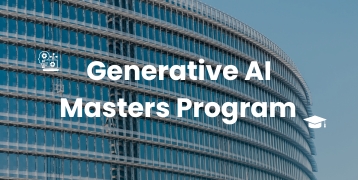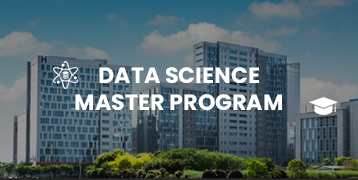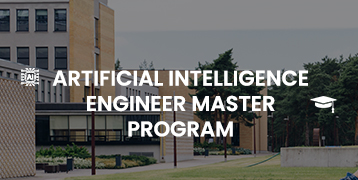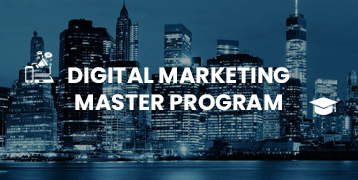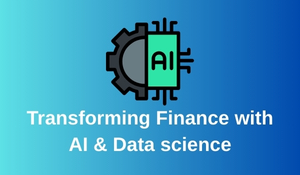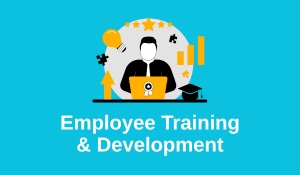
Table of contents for How to Employee Training & Development in 2025
Introduction
Personalized Learning Experiences
- AI-driven learning
- Learning Experience Platforms (LXPs)
- Data-driven insights
Skills Agility and Upskilling/Reskilling
- Focus on skills development
- Reskilling and upskilling initiatives
- Soft skills training
Learning in the Flow of Work
- Microlearning
- Immersive learning
- Social and collaborative learning
- On-the-job training and performance support
Importance of Analytics and Metrics
- Measuring learning effectiveness
- Identifying skills gaps
- Data-driven decision-making
Human-Centric Approach
- Employee engagement and satisfaction
- Employee-centric learning
- Continuous learning
Conclusion
Introduction
Employee training and development are important components of any successful 2025 firm. With the workplace and technology growing at such speeds, businesses have no choice but to be concerned with employee training in acquiring new skills and career development. Training initiatives get employees familiar with new tools, techniques, and trends in the industry. Not only do individuals benefit from this greater personal performance, but the company’s productivity is enhanced as well.
In 2025, staff development is more flexible and individualized than ever. A majority of organizations apply a mix of web-based courses, workshops, and one-on-one mentoring to address the various learning requirements of students. Training becomes part of an ongoing process instead of an episodic one in order to enable employees to keep honing their skills.
Soft skills like communication, teamwork, and problem-solving abilities are just as important to businesses as technical talents. Workers must be trained to manage workers, improve job satisfaction, and prepare workers for future employment with the company.
Overall, successful employee training and development efforts in 2025 are all about continuous learning, flexibility, and getting the workforce ready for the demands of a constantly changing work environment. Along the way, businesses can remain competitive as well as enable their employees to make full use of their potential.
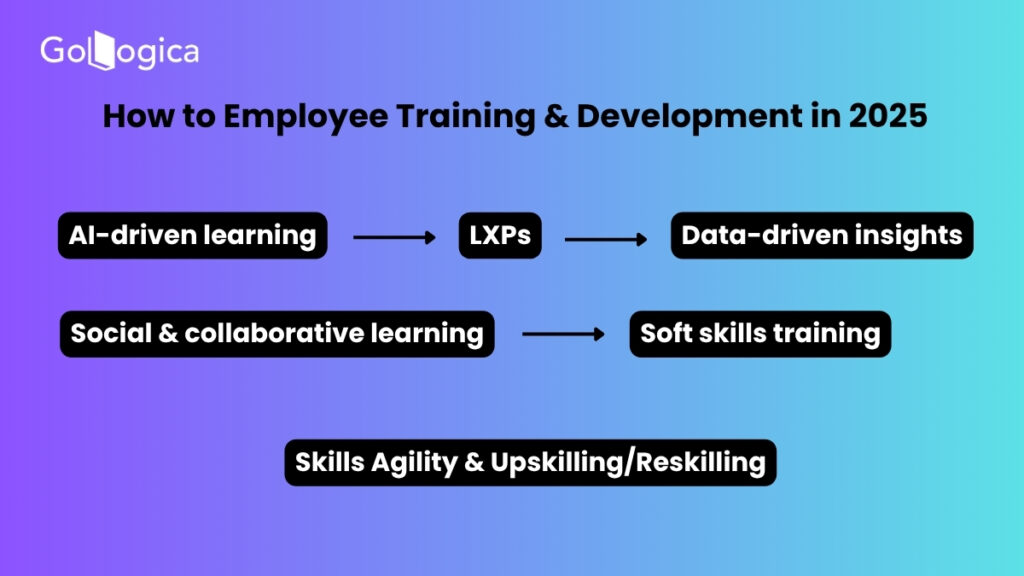
Personalized Learning Experiences
Personalized learning is reshaping the learning process by responding to individual needs, speed, and interests. In contrast to implementing the same strategy for everyone, personalized learning provides an opportunity for every student to follow a path best suited to them. Intelligent learning systems, Learning Experience Platforms (LXPs), and data insights are the key drivers in making this feasible. Let us discuss how each of them facilitates a smoother learning process.
AI-Driven Learning
Intelligent learning systems constitute one of the biggest components of differentiated learning. They are intelligent machines that know what a learner is proficient in and what they are weak at. Based on this, they make suggestions of lessons, videos, or exercises that will assist the learner to improve. For instance, if a student excels in mathematics but is in need of practicing grammar, the system can present more practice in grammar rather than wasting time in the field where the student is already well-versed.
These systems also possess the ability to increase or decrease the level of difficulty of content according to progress. When a student is progressing at an aggressive rate, the system can provide more difficult content. When someone is struggling, it can decelerate and reprise classes to establish a stable foundation. In this manner, students are never bored or rushed.
Learning Experience Platforms (LXPs)
LXPs are designed to be convenient and more tailored. Its differ from the usual learning management systems (LMS) that simply provide course assignments. LXPs offer learners more autonomy. Learners can navigate content according to their objectives, interests, or job. These systems tend to suggest articles, videos, podcasts, or training modules based on relevance to the learner’s interest.
LXPs also facilitate learning through social functionality. Learners can follow influencers, participate in discussions, or share valuable content with other learners. This provides a space of community where one learns not only from the platform but from one another as well. Another good thing about LXPs is that they merge and blend various types of content, so one can read, look at, or listen – whatever suits best.
Data-Driven Insights
To make learning even more personalized, information is involved. Every time an individual completes a lesson, skips a video, or delays on a quiz, that action provides feedback. When efficiently collected, the information can show where learners require extra help or what they enjoy most.
Teachers and institutions can use this information to improve the learning process. For example, if most people are not passing a certain module, then the module will have to be clarified in a more improved manner. Or if students would like to work on interactive quizzes rather than long texts, more quizzes can be added so that they stay engaged.
For students themselves, data can be employed to track progress. Dashboards can provide a measure of how far they’ve gotten, how well they’re doing, and where they should focus next. This makes people more willing and capable of achieving learning objectives at a faster pace.
Skills Agility and Upskilling/Reskilling
The corporate world is changing very fast. New business models, new technologies, and new ways of working are being created day by day. It is not only necessary for organizations and workers to keep up with the changes necessary but also imperative. These are the spaces where skills agility, reskilling, upskilling, and soft skills training are playing a pivotal role. These programs assist employees to advance in their professions while also allowing businesses to stay competitive.
Skills Development
Skills development is the acquisition and improvement of the skills necessary to perform a job efficiently. This can include learning new tools or software, learning about trends in the industry, or becoming more proficient in daily processes. For instance, a marketer can learn how to use a new online platform, while an engineer can learn about newer machinery.
Time spent building abilities keeps individuals current and self-assured in their profession. Time spent building abilities also boosts morale and results in better opportunities. For companies, continuously learning employees are more effective, more engaged, and more capable of overcoming challenges. Regardless of the internet, workshops, or on-the-job training, skill-building should be a regular aspect of every career.
Upskilling and Reskilling Initiatives
As the profession becomes more dynamic and job positions evolve, the majority of professionals are bound to learn something new. This gives rise to two such top strategies: upskilling and reskilling.
Upskilling is developing additional sophistication in your current skills or gaining a new skill to be a master in the same area of work. For example, a project manager can upskill to become proficient in Agile techniques to complete work more effectively. Upskilling makes employees more accountable and adds value to their organization.
Reskilling is somewhat unique in that it refers to learning new skills in order to enter into a new career. It is useful when one’s current job has become outdated or for a career transition. For example, one can retrain a customer service representative to work in an IT help desk or a data entry role.
GoLogica offers reskilling and upskilling projects to provide their employees with future competencies. They would rather retrain current employees for new positions than recruit new employees. It is less expensive, spurs loyalty, and fosters a culture of ongoing learning.
Soft Skills Training
Soft skills are just as important for career success as technical skills. They consist of leadership, teamwork, communication, adaptability, and time management. While they are easy to understand, soft skills allow one to interact suitably with other individuals and solve workplace issues timely.
For instance, effective time management will see you complete assignments effectively, and effective communication will avoid miscommunication. Soft skills can be trained in the shape of group exercises, role-playing, feedback meetings, and field simulations.
Managers tend to say that though the hard skills may get you the job, it is the soft skills that will make you grow and lead. And truly, most organizations today include training in soft skills within their employee growth plans.
Learning in the Flow of Work
The employees must learn in work in the bustle-and-hustle of the day and age. One cannot always leave work for prolonged durations of training. The popularity of “learning in the flow of work” can be attributed to this. By this term, learning is associated with everyday activity. With such a tactic, one can acquire new abilities without disrupting normal work. Let us discuss four of these popular tactics in greater detail micro learning, immersive learning, collaborative and social learning, and on-the-job training with performance support.
Microlearning
Microlearning is the method of learning in small parts. Instead of enduring a full-day seminar or hour-long lecture, employees are given bitesized lessons on a single topic. The lessons could be brief video clips, flash readings, step-by-step guides, or even mini-quizzes.
This kind of learning is well-suited into quick breaks or idle time during the day. For example, a worker can watch a 5-minute video as a method of learning to operate a new gadget or do a task. Microlearning also has low effort and makes people easily recall. It’s simple to focus as the course is quick and concise.
Immersive Learning
Immersive training allows employees to practice in a simulated or virtual environment. It employs technologies such as virtual reality (VR), augmented reality (AR), and computer simulations. It is especially used where mistakes in real life would be expensive or dangerous.
For example, an employee might train himself to repair machines using a VR headgear before working on the actual machine. Or a nurse might simulate patient care scenarios so that they feel safe. Immersive learning creates a safe atmosphere in which to make errors and learn. Immersive learning allows employees to learn hands-on skills in a real and experiential way.
Social and Collaborative Learning
Social and collaborative learning take place when employees acquire knowledge at the same time. It entails the sharing of knowledge, asking questions, collaboration, or group discussion. It can take place during meetings, in chat rooms, or via collaborative tools such as shared documents or discussion boards.
When workers describe how they come up with solutions or get work done, all parties benefit. Such a kind of learning supports teamwork collaboration and shares useful information within the company. It also promotes a learning culture and it’s worth. Workers feel that they are more of a team and are cared for in their growth.
On-the-Job Training and Performance Support
The most successful learning process will likely be on-the-job training. It entails learning by doing the job itself, typically under the guidance of a more experienced veteran. New employees can see and imitate veteran employees, with hands-on experience as they continue working. It instills confidence and ensures learning is utilized on the job itself.
Besides training for the job, performance support tools provide a helping hand when necessary. Checklists, procedures in step-by-step, reminders in condensed form, or in-system guidance are some examples. A customer service representative, for example, might utilize a script or guide to close a call. The tools help employees get the job done even during the learning phase.
The Importance of Analytics and Metrics in Learning
Along with any learning or training program, simply pushing the content is not enough. To be truly successful with learning programs, organizations and learners must also know how well the learning is performing. That is where analytics and metrics enter the picture. Analytics and metrics in learning, reporting and measuring provide businesses with the ability to make better decisions, enhance training programs, and develop their employees. Let us examine three of the most significant reasons metrics and analytics are so critical: quantifying the effectiveness of learning, skills gaps, and facilitating data-driven decision making.
Measuring Learning Effectiveness
One of the most basic reasons for measuring learning is to find out whether the training is indeed causing people to learn and improve. Learning effectiveness is gauged through verification of whether the trainees are gaining the knowledge and skills that the program aims to transfer to them. It can be done using tests, quizzes, surveys, and observing job performance.
For example, if employees complete a course but still struggle with the same task, then the training must not be sufficient. However, if scores improve on tests and employees are more confident, then the training has been effective. Learning effectiveness measurement informs firms what part of a program works and where it needs to be improved, so money and time are being invested wisely.
Identifying Skills Gaps
The other major use of analytics is in the determination of skill gaps. A skill gap is where employees do not possess the skills or knowledge they need for the job they have or for advancement to future jobs. From learning data, companies can see exactly where those gaps are.
For example, if a team is consistently failing in a certain area, it indicates they require more training in that department. This allows firms to come up with particular learning initiatives to bridge these gaps prior to them becoming significant problems. This helps employees remain current and prepared for the next challenge, something especially necessary in high-speed industries where the competencies become obsolete the moment they are acquired.
Data-Driven Decision-Making
Metrics and analytics facilitate data-informed decision-making. It is making decisions based on facts and figures rather than hunches or intuition to guide learning plans. With open data on what works and what doesn’t, executives can make fact-based decisions regarding training investment, course creation, and resource deployment.
For example, if data show that a specific course has poor completion rates, policymakers can attempt to find out why. Maybe the course is too long or just not interesting enough. According to that, they can redesign the course to better meet learners’ needs. Data-driven decision-making ensures learning programs become more effective, efficient, and business-oriented.
Human-Centric Approach
In today’s workplace, success does not depend solely on strategy or technology but on people. A people-first strategy is one where employees are kept at the center of whatever an organization does. Employee engagement is valued in such a strategy, their learning needs are put at the highest level, and they are encouraged to learn on a long-term basis. Let’s examine three important elements of the strategy: employee satisfaction and happiness, employee-first learning, and continuous learning.
Employee Engagement and Satisfaction
Employee engagement is an issue of whether employees feel cared about and motivated while working. Employees care more about the job, are proud of their work, and do extra things gladly when they are engaged. Satisfaction comes from feeling valued, supported, and satisfied in the workplace.
Companies can maximize involvement by having the workplace be an excellent place to be where people get heard and valued. This involves treating workers justly, communicating effectively, and providing opportunities for development. If workers like what they are doing and also have some part to play in making decisions, they will never leave. Participation also translates into improved collaboration and productivity, a win for all.
Employee-Centric Learning
Employee-centric training consists of developing employee development programs that are designed with respect to the individual needs and goals of each employee. In contrast with the one-size-fits-all approach, companies consider individual strengths and weaknesses as well as career goals.
For example, some employees would have to take technical skills upgrading courses, but others need leadership or communication support. Tailoring learning like this makes it relevant and effective. When an employee is made to feel that learning is for him or her and his or her growth, he or she will be encouraged to learn. Such an activity illustrates to employees that the organization is interested in their success, not organizational success.
Continuous Learning
The world continues to change, especially with business and technology. Continual learning means continually broadening and refining skills every year. It’s not enrolling in courses once but making learning a habit.
Promoting continuous learning equips employees to face future challenges and opportunities. It may be as easy as reading journals, taking short courses on training, or learning from fellow employees. Organizations that encourage continuous learning build an environment where individuals are curious and willing to change. This mindset helps people and organizations learn and evolve in a competitive economy.
Conclusion:
GoLogica provides efficient employee development and training solutions customized to fulfill the requirements of such a dynamic work environment in 2025. Its training solutions are designed to enable employees to develop the skills and expertise required to perform and excel and advance in their profession. From a plethora of training options including online training, hands-on training, and mentorship, it enables training to become feasible and available to all.
The organization recognizes that each student is unique, and therefore their training sessions are designed to accommodate individual career aspirations and learning orientation. This also promotes ongoing learning because workers are stimulated to constantly update their abilities in the quest to remain competitive and relevant.
With the partnership of GoLogica, organizations are able to build a more confident and capable team. This results in enhanced job performance, enhanced employee engagement, and business growth. This is still a significant partner for organizations that are keen on committing to employee development and future-proofing in 2025. Their training solutions enable employees and organizations to thrive together.
GoLogica in collaboration with IBM, offers Full Stack Developer training to help you advance your career in web development, covering both front-end and back-end technologies.


